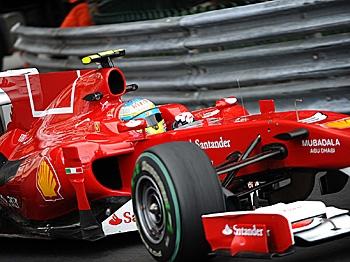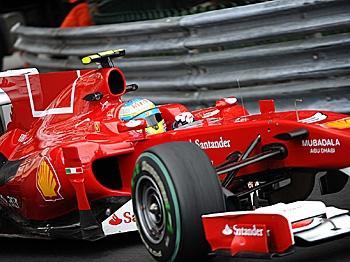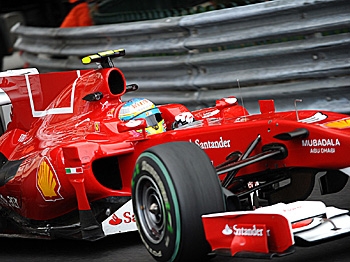The first two practice sessions for the 2010 Formula One Grand Prix of Monaco are in the books and surprisingly, Red Bull wasn’t fastest.
That honor belonged to the Ferrari of Fernando Alonso, who turned a lap of 1:14.904, the only driver to break 1:15.
“On this track a major set up change might give you half a tenth, but trusting your driving can see you gain half a second,” Alonso said on Fomula1.com. “We therefore worked on finding the right feeling with the car and on making it easy to drive.”
Nico Rosberg put his Mercedes next in line, with a 1:15.013. Sebastian Vettel’s Red Bull was third, at 1:15.099.
Of course it is only practice. Teams were testing their new Monaco-only front suspensions and aero packages, checking braking points, trying different fuel loads, and learning the changes in the circuit (new pavement in some areas, and raised curbs behind the rumble strips on Turns 11 (the Nouvelle Chicane,) and 16 (Swimming Pool.))
With all of that one certainly cannot predict the winner, let alone the starting grid, based on today’s two practice sessions. But one can make observations.
Run since 1929, the Grand Prix of Monaco is a tradition and a spectacle as much as it is a race. The home of the richest and most glamorous, Monaco is the quintessential jet-set destination, the perfect setting for a Grand Prix. The privileged few back their yachts up to the edge of the circuit to take in the race. On par with the 24 Hours of Le Mans and the Indianapolis 500, the Grand Prix of Monaco is the premier Formula One race of the season.
The course snakes through the heart of what is now a densely-developed city, its narrow roads a holdover from the days when cars, even racing cars, were significantly slower.
That honor belonged to the Ferrari of Fernando Alonso, who turned a lap of 1:14.904, the only driver to break 1:15.
“On this track a major set up change might give you half a tenth, but trusting your driving can see you gain half a second,” Alonso said on Fomula1.com. “We therefore worked on finding the right feeling with the car and on making it easy to drive.”
Nico Rosberg put his Mercedes next in line, with a 1:15.013. Sebastian Vettel’s Red Bull was third, at 1:15.099.
Of course it is only practice. Teams were testing their new Monaco-only front suspensions and aero packages, checking braking points, trying different fuel loads, and learning the changes in the circuit (new pavement in some areas, and raised curbs behind the rumble strips on Turns 11 (the Nouvelle Chicane,) and 16 (Swimming Pool.))
With all of that one certainly cannot predict the winner, let alone the starting grid, based on today’s two practice sessions. But one can make observations.
History, Glamour, Speed
Run since 1929, the Grand Prix of Monaco is a tradition and a spectacle as much as it is a race. The home of the richest and most glamorous, Monaco is the quintessential jet-set destination, the perfect setting for a Grand Prix. The privileged few back their yachts up to the edge of the circuit to take in the race. On par with the 24 Hours of Le Mans and the Indianapolis 500, the Grand Prix of Monaco is the premier Formula One race of the season.
The course snakes through the heart of what is now a densely-developed city, its narrow roads a holdover from the days when cars, even racing cars, were significantly slower.






